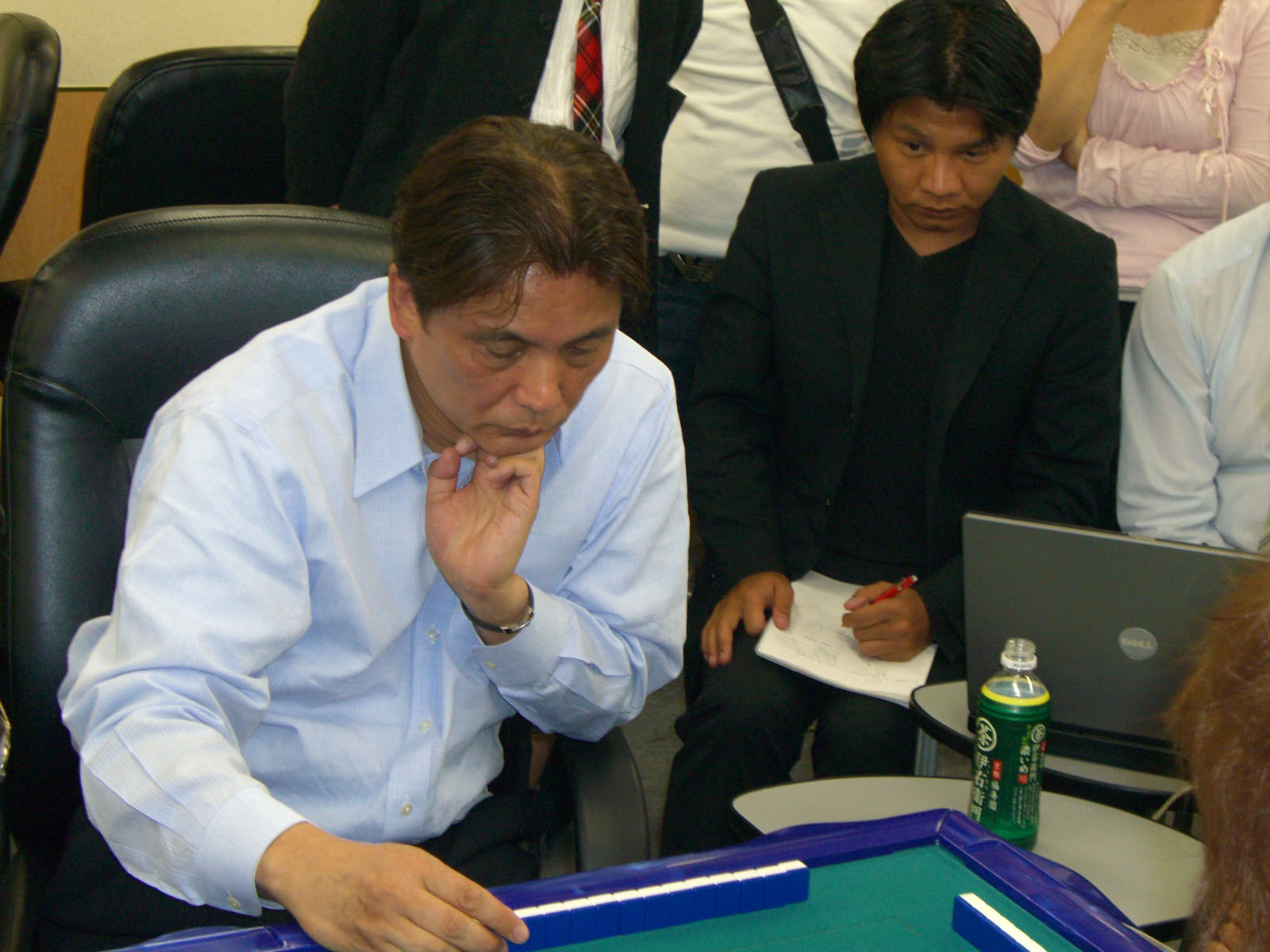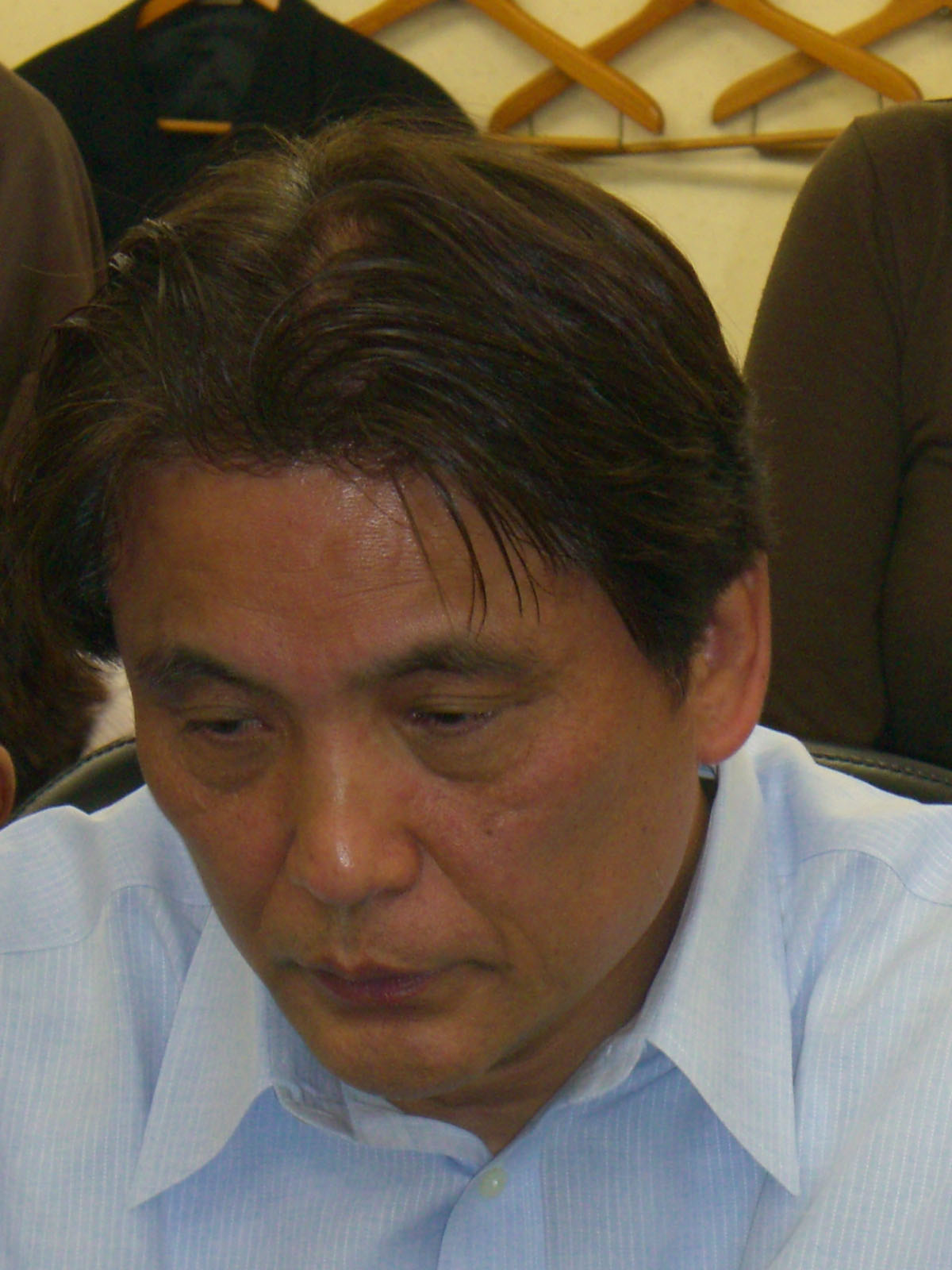Pro Interview: Shigekazu Moriyama (part 1)

 You’ve seen some of the rising stars in past interviews on Reach Mahjong. This week we got a special treat, a chance to talk to one of Mahjong’s long time shining stars. He was around for the birth of the current Mahjong era in Japan, its Big Bang, as it were.
You’ve seen some of the rising stars in past interviews on Reach Mahjong. This week we got a special treat, a chance to talk to one of Mahjong’s long time shining stars. He was around for the birth of the current Mahjong era in Japan, its Big Bang, as it were.
I think both Jenn and I were a little nervous going into this interview because he’s not only one of the most successful Mahjong players in Japan, but he’s also been our mentor since even before we joined the Japan Professional Mahjong League (JPML). While he’s given us tons of insight on how to play the game, here was a rare chance to hear about not only his history in the game but the history of the game itself. As Vice President of the JPML and creator of Ron2, he is one of the major shapers of what Mahjong has become today and what it will be in the future. So without further hubbub, let us shine the spotlight on a man who’s already his own shining light, Shigekazu Moriyama.
ReachMahjong.com: So let’s start off with why you started Mahjong?
Shigekazu Moriyama: I started about 38 years ago. When I started college at 18 or so. At that time in Japan there weren’t very many games to play. There were sports and game centers with things like foosball and pinball, but no big arcades like there are now. So at that time Mahjong was extremely popular and everyone was playing it from college students to white-collared workers. Mahjong was the cheapest thing to do and we could play all night long.
RM: But didn’t you bet money on the games?
SM: Yes, we bet, but we would bet small amounts. The first time I ever played was only for about 10-yen for every 1,000 points.
 RM: So that’s where you started? (at the Mahjong parlor)
RM: So that’s where you started? (at the Mahjong parlor)
SM: Yes, at that time everyone would play at the Mahjong parlor. We’d play at home too because it was cheaper. Now there are video games and computers and don’t play at the Mahjong Parlors much anymore.
RM: There are still tons of Mahjong Parlors though
SM: There were even more. But at that time there was no Reach Mahjong the way they have it now. You couldn’t just go to the parlor and pick up a game, you always had to have 4 people and just rented a table. If you wanted to play with people you didn’t know, there was only Boo Mahjong.
We call casino Mahjong Reach Mahjong. Japanese-style Mahjong is just called Mahjong and when we talk about casino-style mahjong it’s Reach (riichi). In English, Reach/Riichi refers to the rule set, but in Japanese almost everyone plays the same rules, so we don’t have to distinguish by calling it Reach/Riichi.
RM: When did you first play Casino-Style (Free)?
SM: I first played when I was 24 or so. That’s when the Reach Mahjong parlors started to open up and gain popularity. That was probably 32 years ago. Before that the only casino-style games were Boo Mahjong.
RM: How did you decide to become a pro?
SM: After I graduated college and spent 6 months in the US, I went back to Yamaguchi and I noticed that all of the Mahjong pro’s were really bad. So I decided that I should come to Tokyo and teach them how to play. I was confident, but I was also really good. It wasn’t a question of becoming a pro, I already was a pro.
RM: There were no leagues or organizations at that time, so what defined a pro?
SM: At that time there were no Professional Leagues. ‘Pro’s’ were people writing articles in magazines. Their level was really low though.
RM: Were there pro’s making their living off of Mahjong at that time?
SM: There were a few like Takeo Kojima and Asataro Nada, but not very many. Takeo Kojima was playing on TV already.
RM: Did you have a mentor?
SM: No. I never had a teacher. I think Mahjong is something that if you play and think about it while you’re playing, then you’ll understand the game by yourself. You understand what happens when you Reach or discard winners. After you understand this and think about the game, then you can think about what to do. If you understand Mahjong, then you don’t need anyone to teach you. I’m not very keen on letting people teach me things. I already knew all this when I became a pro and I realized that no one else knew this.
RM: How did you practice and improve your game?
SM: I played a lot. I played and thought about the game while I was playing. Making a hand in Mahjong is easy. The problem is after you know all that, and still lose, why do you lose? If someone is playing worse and they still win, it means they’re lucky. It’s really important to follow natural hand-paths when you’re having a lucky run and pull back when you’re not. All this has to be factored in when playing Mahjong. For example, if we tried to make a war on the US, we would lose because they have too much power. To fight with someone you have to rise above or bring them to your level by bringing down their luck level. I still teach this, but I really want these players to come to the realization themselves.
RM: As a pro, did you focus on playing free or tournaments?
SM: I was playing tournaments. To be recognized as a pro, you had to win something big, so I played a lot of tournaments.
 RM: When did you win your first title and which one was it?
RM: When did you win your first title and which one was it?
SM: I becamse a pro at 25 and I won at 30. It took a little less than 4 years. It was the OUI Tournament that we still have now. But at that time there weren’t very many tournaments. I got 1,500,000yen for that and it was 25 years ago, so that was worth even more. I also got about 500,000yen worth of vouchers.
RM: So how did you feel when you won?
SM: I wasn’t playing for a long time, so it wasn’t a feeling of, “finally,” but to me it was necessary so that I would be recognized as a pro. That was how we got work.
Check back here next month for Part 2 of this interview with Vice-President of the Japan Professional Mahjong League, Shigekazu Moriyama.

